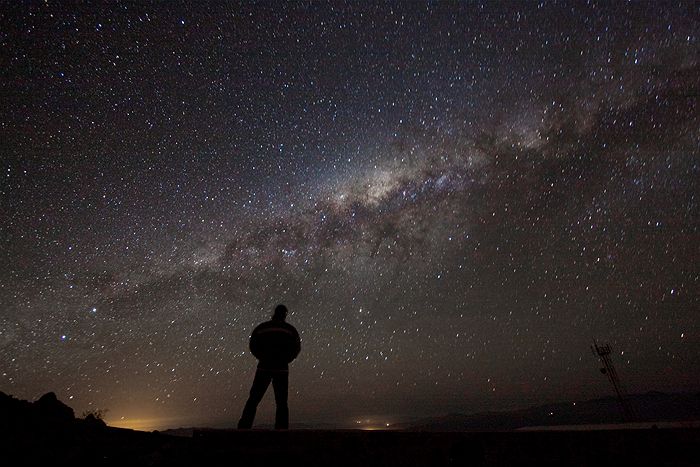
Scientists used data collected by the Sloan Digital Sky Survey to reanalyze the brightness and distance of stars at the edge of the galaxy. They found that the fringe of the disk is puckered into ridges and grooves of stars, like corrugated cardboard.
"It looks to me like maybe these patterns are following the spiral structure of the Milky Way, so they may be related," astronomer Heidi Newberg, with Rensselaer Polytechnic Institute in New York, told Discovery News.
She and colleagues suspect that a dwarf galaxy may have plunged through the disk of the Milky Way, setting off ripples, like a pebble falling into a pond.
Intruder galaxies also may have set up spiral wave patterns that later trigger star formation in the gas along waves, leading to spiral arms in galaxies.
Evidence that the so-called Monoceros Ring, located more than 65,000 light-years from the center of the galaxy, actually is part of the Milky Way surprised Newberg, who was on a team that discovered the ring in 2002.
"We thought it was a tidal debris stream -- a dwarf galaxy that came in and spread itself out in this big ring. For 15 years, there's been a controversy in the field where half the astronomers think it's a tidal stream and half the astronomers think it's something in the disk. I was in the stream camp," says Newberg.
"What I was trying to do was find more evidence that it was streams. It took a very long time to get this result, partly because I had to change my whole way of thinking. It now looks to me like it's part of the disk," she says.
Incorporating the ring into the map of the Milky Way expands the galaxy's span from 100,000 light-years to 150,000 light-years, says study co-author, astronomer Yan Xu of the National Astronomical Observatories of China and former visiting scientist at Rensselaer.
Light travels at nearly 300,000,000 metres per second, so one light-year is nearly 10 trillion kilometres.
Astronomers are eager for a higher-resolution, three-dimensional views of the Monoceros Ring, and another ring even farther out, from Europe's Gaia telescope.
Meanwhile, they are interested in seeing if ripples found in gases in the Milky Way are related to what has been observed in the stars.
"In the gas, we have seen a couple of perturbations, these vertical oscillations, in the outer part of the galaxy," says astronomer Leo Blitz of the University of California, Berkeley.
As far as signs of an intruder galaxy, one may have already been found, he adds. Publication of that discovery is pending.
The research by Newberg and colleagues is published on the pre-press website ArXiv and will be published this week in the Astrophysical Journal.



Reader Comments
to our Newsletter